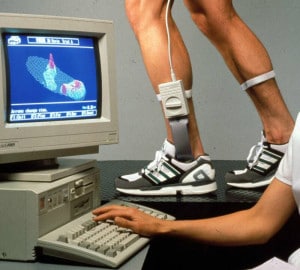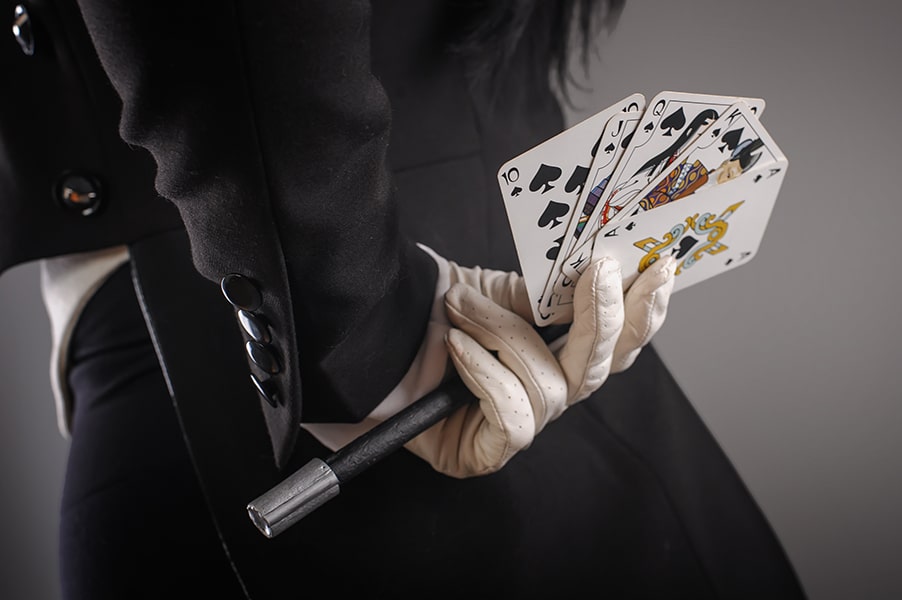Most people think of transparency as almost the opposite showmanship. Most people are wrong.
Transparency is letting prospective customers see through to whatever they feel they need to verify in order to confidently give you their money. Or to at least take that next step toward doing business with you.
 But a lot of persuasive techniques help build confidence in the prospect. The difference is that transparency creates confidence in highly skeptical or suspicious prospects, in situations where most other persuasive techniques simply wouldn’t work. “Seeing is believing,” and all that — it’s powerful stuff.
But a lot of persuasive techniques help build confidence in the prospect. The difference is that transparency creates confidence in highly skeptical or suspicious prospects, in situations where most other persuasive techniques simply wouldn’t work. “Seeing is believing,” and all that — it’s powerful stuff.
So the less trust, the more you need transparency. When the police officer pulls you over, he’s not going to take it on faith that you don’t have a gun — he wants you to keep your freakin’ hands where he can see them. He demands transparency.
Simple, right? But like most buzzwords “transparency” is most misunderstood by the very people mouthing it most often, to the point that they’re oblivious to the proper way to use this persuasive tool in marketing small and medium-sized businesses.
And for the record, the proper way is the way that not only creates trust, but also increases profits. The proper way requires transparency AND showmanship.
Transparency Becomes Showmanship?
Here’s what I mean: If you owned a wood-fired pizza joint, and advertised it as such, most customers would believe you, even if they couldn’t see the oven when they walked in the door. Even if you put the oven in the back.
But they wouldn’t believe with anything near the confidence they’d have if you had that brick, wood-fired oven right out where everyone could see it, so that they could see the wood logs amidst the open flames, and watch while you actively slid raw pizzas in and cooked pizzas out. Nor would they pay you as much money for your pizzas if they couldn’t actually see it all for themselves. Transparency makes the difference.
That’s a great example of the RIGHT use of transparency. But is it ONLY transparency?
Or does rearranging your restaurant to feature a highly visible oven lean closer to showmanship than just plain transparency? When does “letting people see” become “making sure people notice and care about the difference”?
Openly kneading the pizza in the front of the restaurant transparently proves that the pizza dough is fresh made. Spinning and tossing it in the air ensures customers get the message (in an entertaining and enjoyable way) through a bit of showmanship. I rather doubt that hand-tossed pizza actually tastes better than hand-made-but-non-tossed pizza. Or that seeing the wood oven makes the pizza taste better than if the oven was in the back. But most people are willing to pay more for these things.
Bottom Line: transparency won’t get you were you really want to go without a little help from showmanship.
OK, but how am I going make this into a Practical How-To?
2 Steps to Transparency & Showmanship
Ask yourself:
-
What strategic difference are you trying to convey to prospects?
What value-added activity or secret ingredient or qualitative difference is your company using to justify your premium pricing? What experiential difference are you hoping to convey that would further justify your price premium in the eyes of the customer?
-
How can I use transparency to transfer confidence & showmanship to add emotional voltage?
Now that you’re clear on what you need the customer to believe in order to happily pay you more money than your competitors, how can you use a bit of transparency to PROVE your claims. And then ask: how can you add some flair, drama, and emotional punch to the presentation of it all?
And because this is a Tactical Practical post, here are some examples of how you might work through this exercise:
Example 1: Service Company/HVAC

“Here’s a comparison of how dirty your coils were, Mrs. Smith…”
Strategic Difference and Value Add: Our HVAC Company Has Better Trained Techs and Offers a More Thorough Tune-Up for Less Money.
Transparency Practices: When HVAC technicians perform a tune-up, do they show the customer the parts they replaced? And I mean that on both ends — do they show them the shiny new part that’s going in, and do they show them the rusty, dirty, and worn old part that came out? That’s a good use of transparency.
Showmanship: Might the HVAC technicians make a show of taking the brand new parts out of the plastic bag or packaging they came in. And perhaps make a bit of a show of visually inspecting the part to make sure it’s right? Better yet, perhaps maybe lubricating or adjusting the thing prior to installation?
Or if there’s no part to replace, do they take before and after photos on their smart phones to show the client? Do they note the sound of the A/C unit as it stains away prior to the visit and point out the sweeter pitch of the system after the tune-up?
Example 2: Shoe Company or Bicycle Store

Do you think these guys are serious about fit?
Strategic Difference and Value Add: Fit & Customization of brands that can’t be bought (or at least can’t be fit) by big box and online commoditizers
Transparency Practices: Posting the 7-point measurement and fit analysis used to provide a customer match between runner (or cyclist) and shoe (or bike). Showing the customer the tools and the measurements at each stage and how those go into figuring out the best fit.
Showmanship: Examining the old shoe and showing the wear patterns to the prospect. Explaining how, if the bought a shoe with the wrong last, what can happen to their foot or running gait or muscles and tendons. Investing in a piece of equipment that can pressure analyze a runner’s actual, in-motion gait. Making a big deal out of that in-motion analysis.
Putting testimonials and pictures of happy clients on the wall. Displaying letters of appreciation from the manufacturers themselves. If Abraham Hyde will go on record as saying your store embodies the real spirit of Saucony shoes, for example, posting that up or even posting a pull-quote from the man would be a perfect piece of showmanship. You might also consider showing off pictures of yourself as a young runner, from back in the day. Showing off the tangible evidence of your own cycling adventures is a great way to allow people see and verify your passion for what you sell.
Showmanship & Imputed Quality = Fatter Profit Margins
Transparency without Showmanship is a wasted effort. It’s like building a high quality product that doesn’t impute quality. Smart, profitable companies invest in showmanship and imputed quality.
Is your company going to be one of them?
- What Digital Superstars Know About Offline Advertising - November 17, 2025
- Unmistakable: A Tale of Two Boots and Branding Done Right - November 8, 2025
- Making the Branding Math *Math* with Broadcast Radio - October 30, 2025

